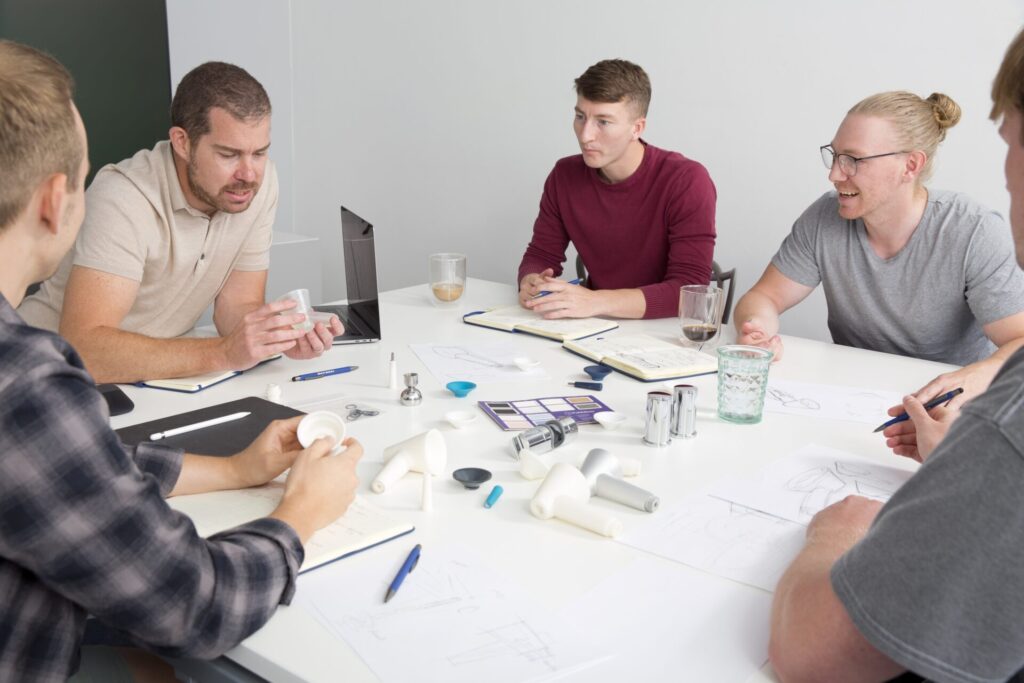& Construction

Integrated BIM tools, including Revit, AutoCAD, and Civil 3D
& Manufacturing

Professional CAD/CAM tools built on Inventor and AutoCAD
3 min read
User research gives designers and engineers a better understanding of a customer’s experience with a product. This article explores various user research methods to help you pick the one best suited to your project.

A thorough and well-executed user research plan can significantly influence product design-related decisions. User research can help consumer product designers better understand user needs and preferences, informing them how to proceed with a project or alter it after release. For example, translating research findings into actionable steps during prototyping is a crucial aspect of product development.
With a plethora of different options available, choosing the appropriate research method for a project can be a daunting task. This article explores various research methods, discusses their suitability for design projects, and hopefully helps determine which research method best fits your needs.
Several factors should be considered when deciding on a research method for a project. No one size fits all – the product, the target consumer, and the market can influence which method you choose. Here, we explore some common research methods and their suitability for different design projects:
In the context of product research methods, a survey is a data collection method that involves gathering information from a targeted group of participants using a set of structured questions. Surveys are administered through various means, including online platforms, paper forms, or in-person interviews.
Surveys and questionnaires are valuable tools for efficiently gathering quantitative data from many participants. They work well for projects that require statistical information, such as understanding user demographics or collecting feedback on specific product features. Surveys are best suited for broad-facing consumer products, where it is important to get an idea of what features consumers generally want on large scales.
Various online survey platforms exist, so collecting user feedback is simpler than ever.
Focus groups bring together a small group of participants for in-depth discussions. This method encourages participants to share their opinions, build upon each other’s ideas, and generate rich qualitative data.
Focus groups are effective when seeking diverse perspectives, exploring user reactions to concepts, or generating new ideas. This is a good research method for more collaborative products since a focus group allows small groups to get together and talk in detail about the product. For example, a tool that requires multiple users may benefit from a focus group where people can get together, use the product, and share feedback.
Observational research involves directly observing users in their natural environments. In the context of products, this method allows designers to witness user behavior, interactions, and pain points firsthand. An observational study may consist of a user working with a product and a researcher recording user experience and feedback.
Observations are valuable when developing products that require a deep understanding of user contexts, such as designing for specific work environments or daily routines. For example, a fitness tracker/wearable product may be a good candidate for an observational study where a user is performing exercise while wearing the product. This way, the researchers can better understand how their product performs in the field.
Once the research phase is complete, the challenge lies in utilizing the gathered insights and acting on them, whether you’re in the initial design or prototyping phase or improving a product for a re-launch.
A particularly useful way to quickly integrate user feedback into a product design is by following the agile product development approach. Agile product development is a flexible and dynamic design approach that allows for iterative design developments in short periods.
Characterized by iterative and collaborative approaches, it can be beneficial in various consumer product design processes. While some products, like software applications or digital services, naturally align with agile methodologies, the core principles of agility—flexibility, collaboration, and responsiveness—can be adapted to any consumer product design process. By embracing agile practices, teams can iterate quickly, incorporate user feedback, and deliver products that better meet user needs.
One key to achieving an agile product development flow is to work with powerful and intuitive design tools like Autodesk Fusion. Fusion powers your consumer products business with a cloud product development platform that unifies CAD, CAM, CAE, and PCB design. Since Fusion is on the cloud, teams can easily integrate any outcomes from user research into their designs at any stage of product development.
By clicking subscribe, I agree to receive the Fusion newsletter and acknowledge the Autodesk Privacy Statement.
Success!
May we collect and use your data?
Learn more about the Third Party Services we use and our Privacy Statement.May we collect and use your data to tailor your experience?
Explore the benefits of a customized experience by managing your privacy settings for this site or visit our Privacy Statement to learn more about your options.